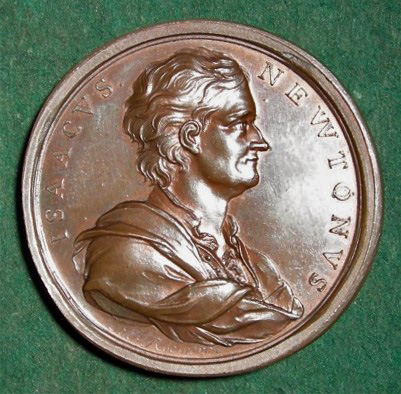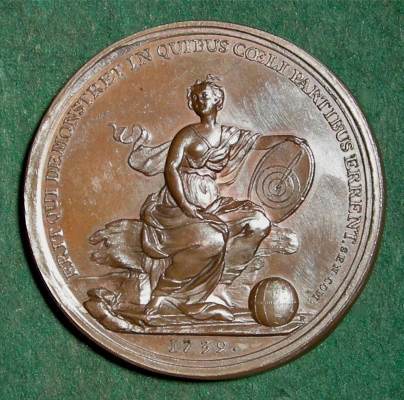

Historical and Commemorative
Medals
Collection of Benjamin Weiss
|
SIR ISAAC NEWTON
ROETTIERS, James (IV): England, 1739, Bronze,
54 mm Sir Isaac Newton (1642-1727) was an eminent
English physicist, mathematician, astronomer, and natural philosopher. He
laid the foundation for differential and integral calculus and did
pioneering work on optics and gravitation. His combined studies make him one
of the greatest scientists the world has known and is regarded by many as
the greatest figure in the history of science. His treatise Philosophiae Naturalis
Principia Mathematica described universal gravitation and the three laws
of motion, laying the groundwork for classical mechanics. He was the first
to show that the motion of objects on Earth and of celestial bodies are
governed by the same set of natural laws. The unifying and predictive power
of his laws was central to the scientific revolution and led to the broader
acceptance of the notion that rational investigation can reveal the inner
workings of nature. This medal was executed by order and at the
expense of Mr. Thomas Hammond, and only a few were struck off as presents to
his friends and to admirers of Newton. The legend on the reverse considers
Newton as fulfilling the prophecy of Seneca that someone would arise to
demonstrate the course of the comets. (Med. Ill.) Lucius Annaeus Seneca was
a writer who lived in Rome in the first century CE. He wrote De Cometis,
a priceless look into the past of what people thought about comets. LINK to
Portrait of Isaac Newton by Godfrey Kneller (from Wikipedia) LINK to Biography of Isaac Newton (from Wikipedia)
|
|